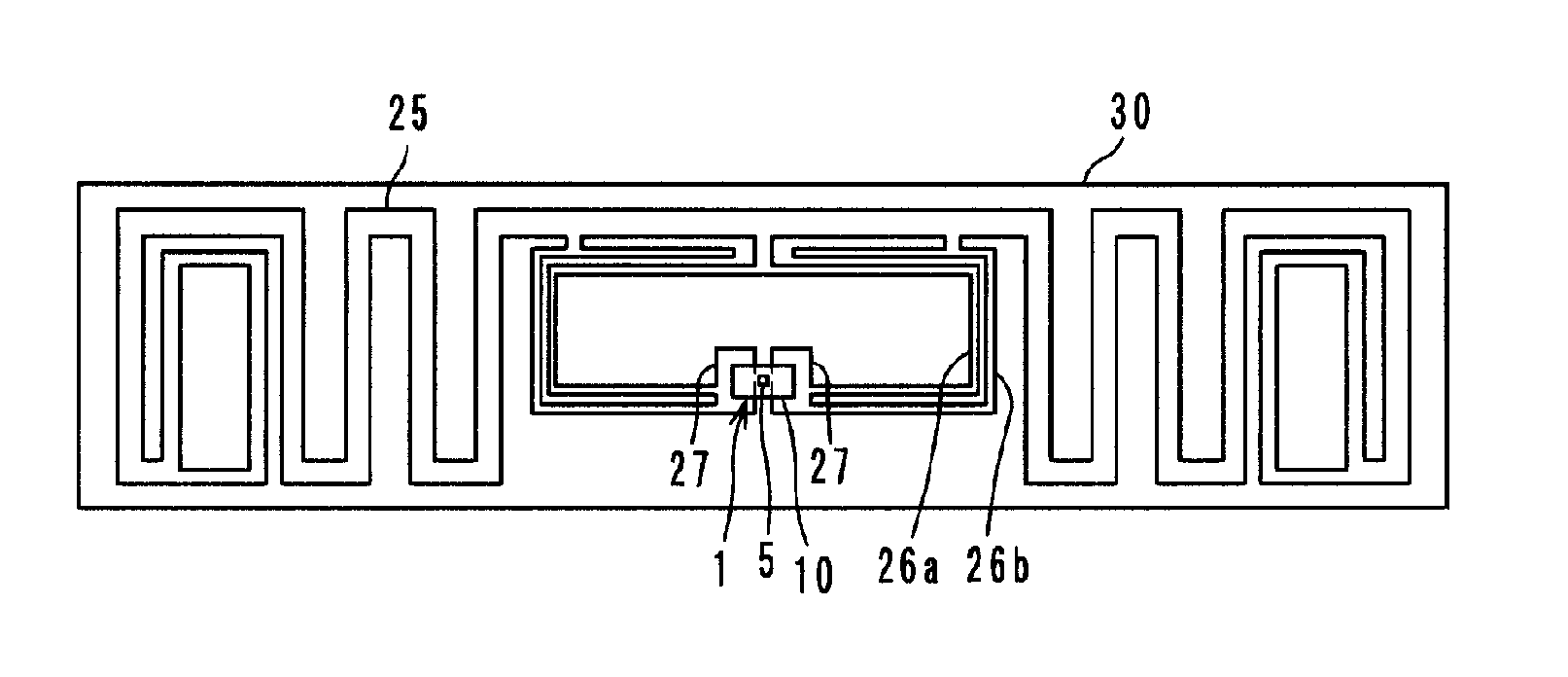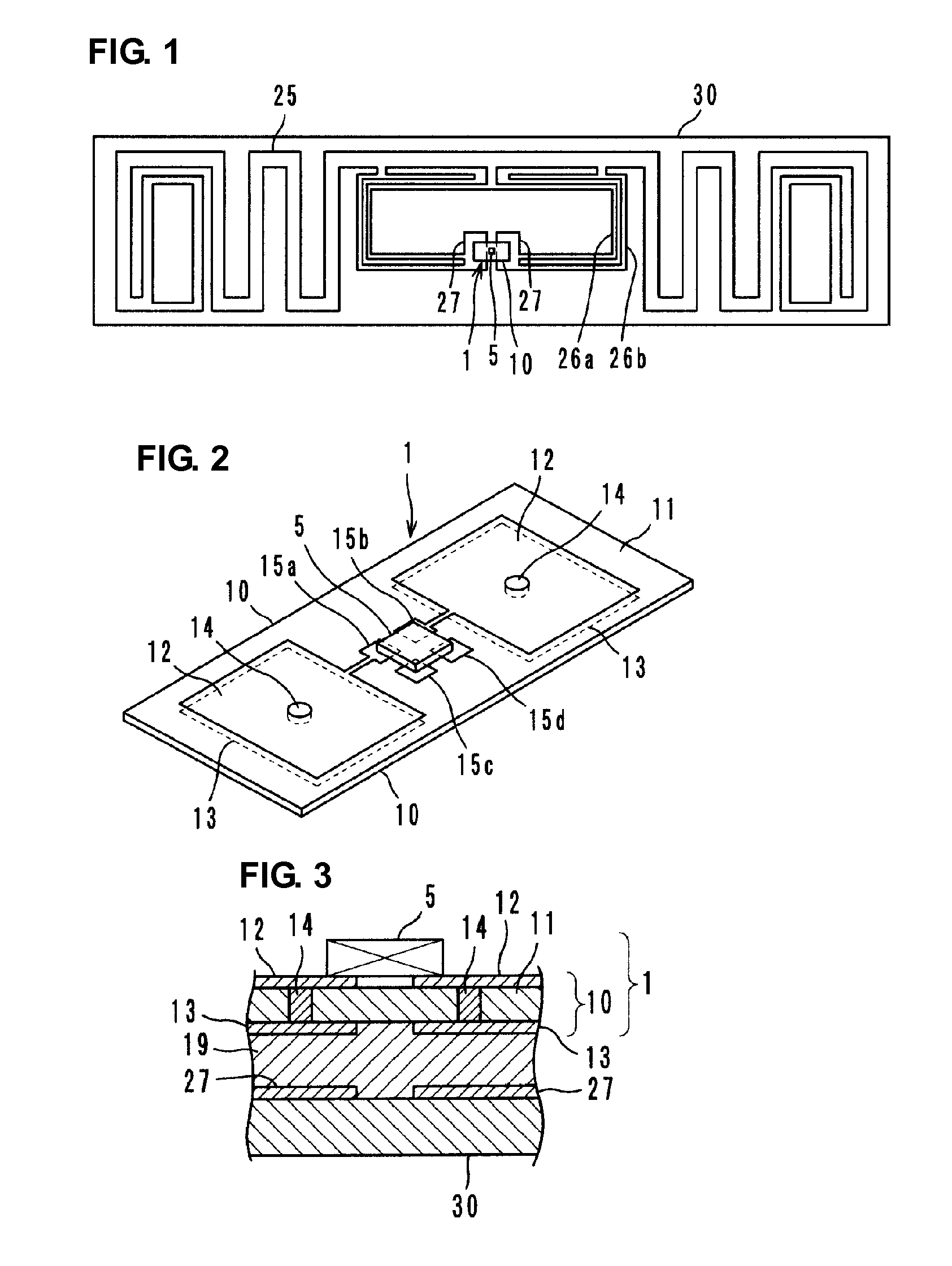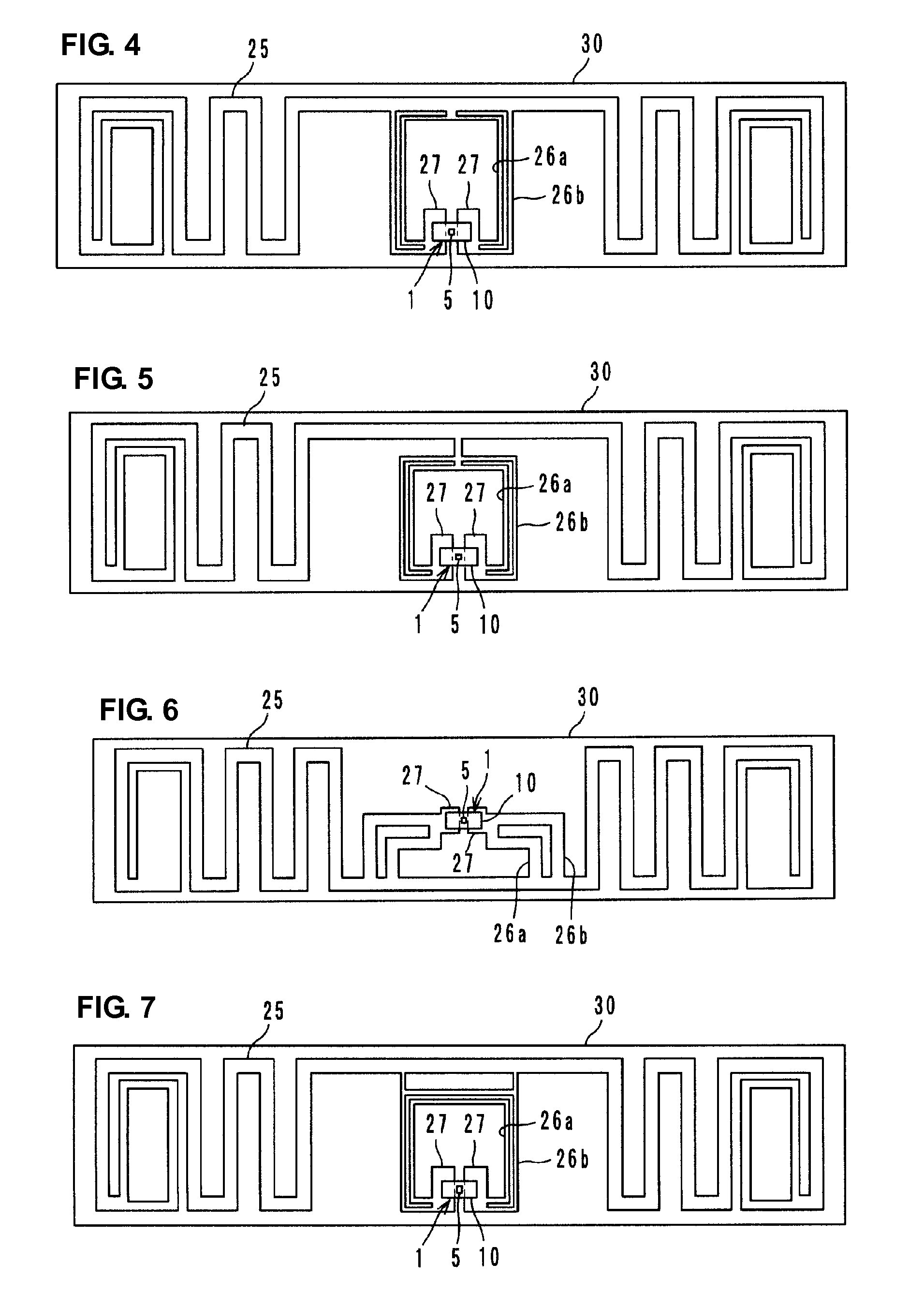Wireless IC device
a technology of ic chip and wireless IC, which is applied in the direction of burglar alarm mechanical actuation, protective material radiating elements, instruments, etc., can solve the problems of undesirable damage to the ic chip and narrow usable frequency band of the wireless ic device, and achieve the effect of small frequency-characteristic varian
- Summary
- Abstract
- Description
- Claims
- Application Information
AI Technical Summary
Benefits of technology
Problems solved by technology
Method used
Image
Examples
Embodiment Construction
[0034]Wireless IC devices according to preferred embodiments of the present invention will be described below with reference to the accompanying drawings. Common components and elements are attached with similar references throughout the drawings to omit a repeated description.
First Preferred Embodiment, FIG. 1 to FIG. 3
[0035]FIG. 1 to FIG. 3 show a wireless IC device according to a first preferred embodiment of the present invention. This wireless IC device includes an electromagnetic coupling module 1 and a radiation plate 25 disposed on a PET film substrate 30. The electromagnetic coupling module includes a wireless IC chip 5 arranged to process transmission and reception signals of a predetermined frequency and a feeder circuit board 10 having the wireless IC chip 5 mounted thereon.
[0036]In the feeder circuit board 10, a pair of planar electrodes 12 and a pair of planar electrodes 13 are arranged on front and back surfaces of a PET film substrate 11, respectively, so as to face ...
PUM
 Login to View More
Login to View More Abstract
Description
Claims
Application Information
 Login to View More
Login to View More - R&D
- Intellectual Property
- Life Sciences
- Materials
- Tech Scout
- Unparalleled Data Quality
- Higher Quality Content
- 60% Fewer Hallucinations
Browse by: Latest US Patents, China's latest patents, Technical Efficacy Thesaurus, Application Domain, Technology Topic, Popular Technical Reports.
© 2025 PatSnap. All rights reserved.Legal|Privacy policy|Modern Slavery Act Transparency Statement|Sitemap|About US| Contact US: help@patsnap.com



